The Cisco Catalyst 9800 Wireless LAN Controller (WLC) introduces a modern, flexible configuration model using tags and profiles to manage wireless networks at scale. In this post I will go through how the various tags and profiles work and the order in which I create them.

The configuration of tags and profiles can be accessed via the GUI of a 9800 WLC using the Configuration menu.
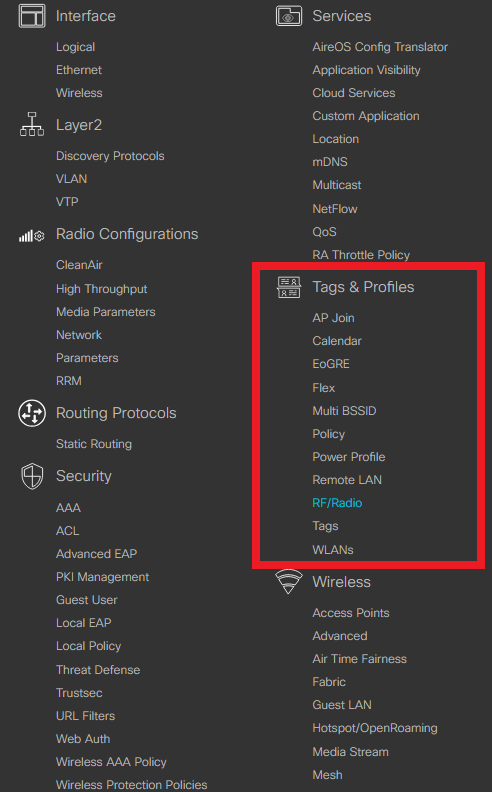
I like to create tags and profiles by creating all profiles first and then mapping them with tags after.
- WLAN Profile
- Policy Profile
- AP Join Profile
- Flex Profile
- RF Profile
- Radio Profile
- Policy Tag
- Site Tag
- RF Tag
- AP Tag
WLAN Profile
The WLAN Profile defines the essential parameters of a Wireless LAN such as SSID, security and advanced WLAN settings. The configuration window is similar to previous Wireless LAN Controllers when configuring SSIDs.

Policy Profile
The Policy Profile controls switching, VLANs, access policies, QoS, anchoring and other operational parameters applied to clients connecting to a specific WLAN.
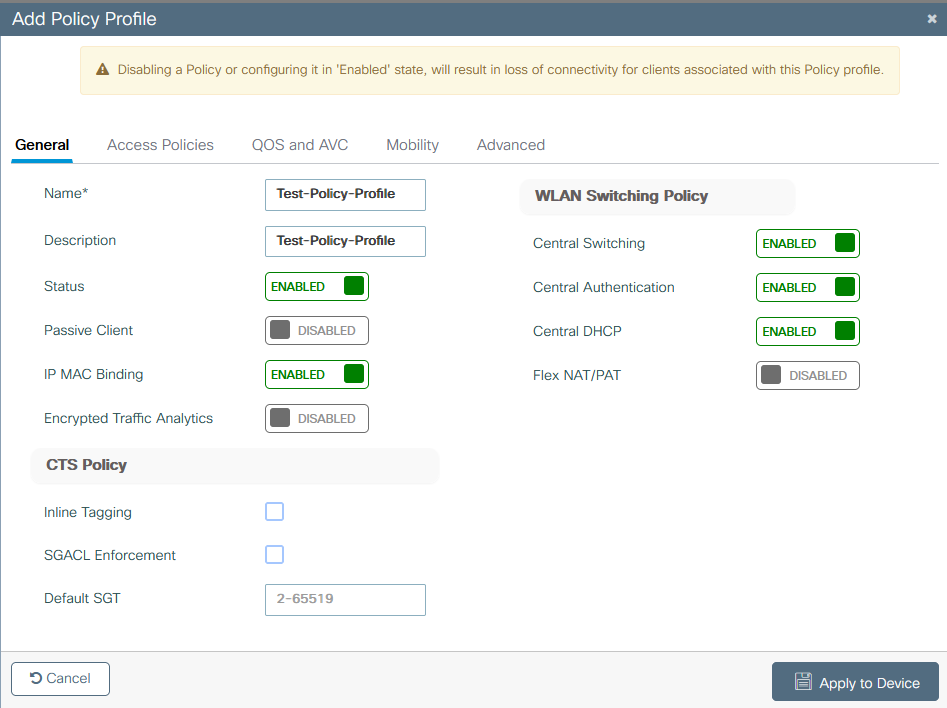
AP Join Profile
The AP Join Profile is a configuration profile that defines how Access Points connect to and interact with the controller. It centralises AP-specific settings, allowing you to manage and standardise the behavior of APs across your wireless network.
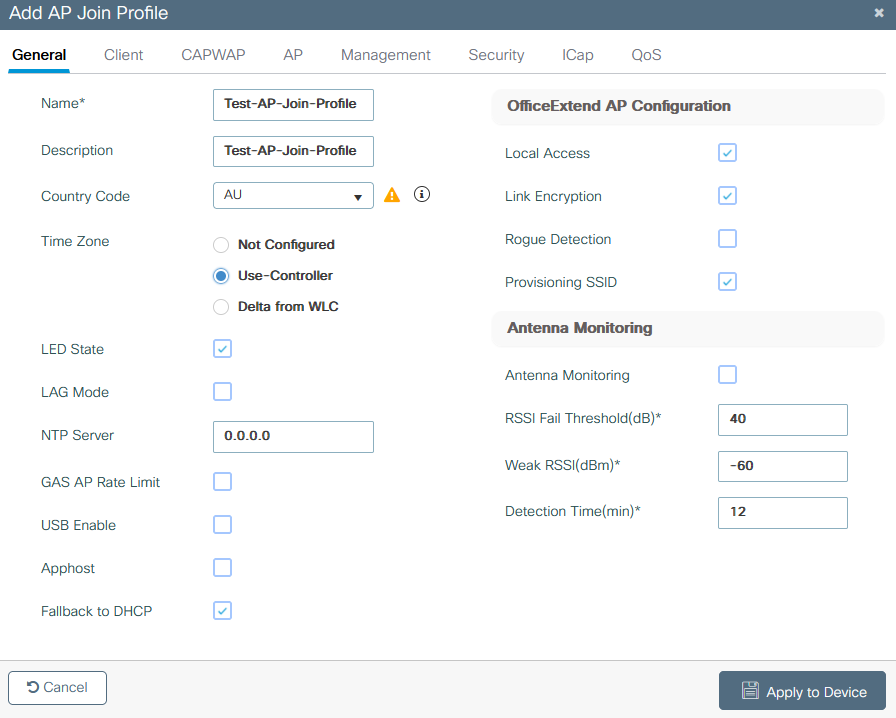
Flex Profile
A Flex Profile is a configuration object that defines FlexConnect-specific settings for Access Points operating in FlexConnect mode. FlexConnect is used primarily for remote or branch sites, allowing APs to locally switch client traffic and maintain some autonomy if the connection to the central controller is lost.
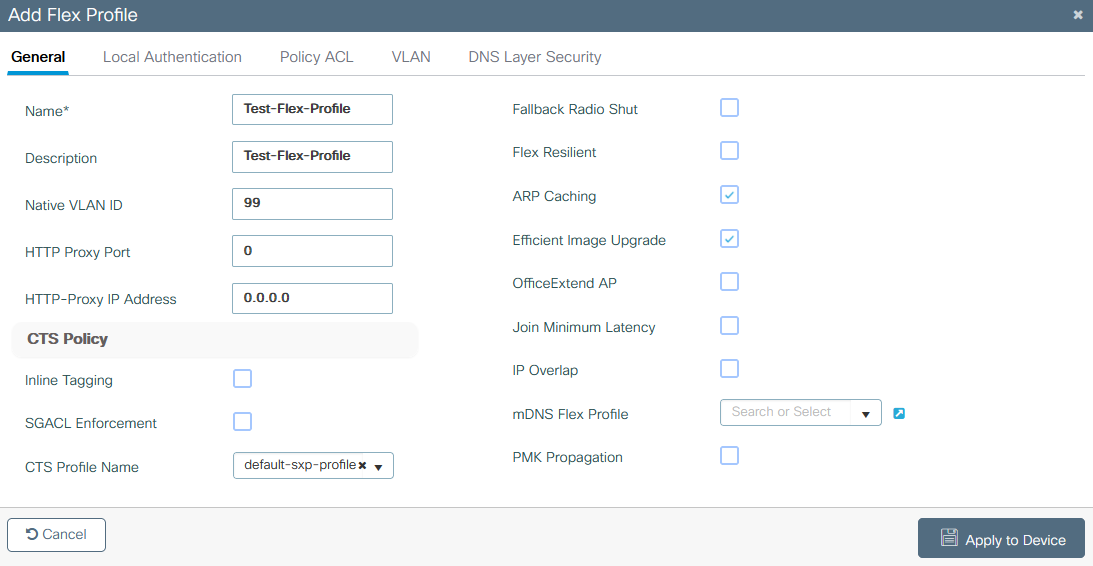
RF Profile
An RF Profile is used to optimise and manage the radio frequency (RF) settings for access points in specific coverage zones. It allows administrators to group APs with similar coverage requirements and customize their RF parameters to suit the environment.
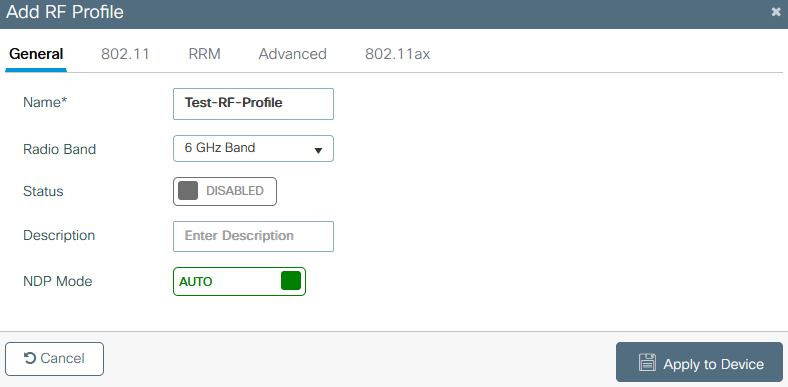
Radio Profile
A Radio Profile defines specific radio parameters and operational settings for access point radios. These profiles are used to fine-tune how the wireless radios and antennas operate in different environments or coverage zones. The Radio Profile focuses more on the antenna configuration than the general radio frequency settings configured in the RF profile.
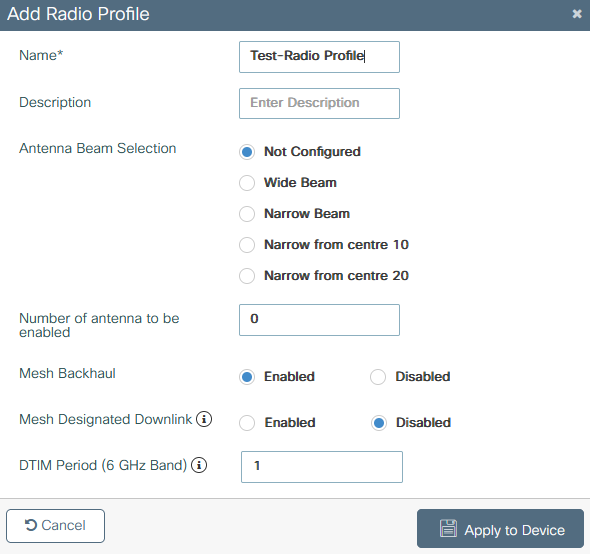
Policy Tag
A Policy Tag links a WLAN Profile (which defines the SSID and its security settings) to a Policy Profile (which specifies network policies such as VLAN assignment, QoS, access control, and other advanced settings). A policy tag determines which SSIDs are broadcast by an access point and what policies are applied to client traffic on those SSIDs. This is a good way to differentiate between buildings or locations at a site similar to how AP Groups used to work.
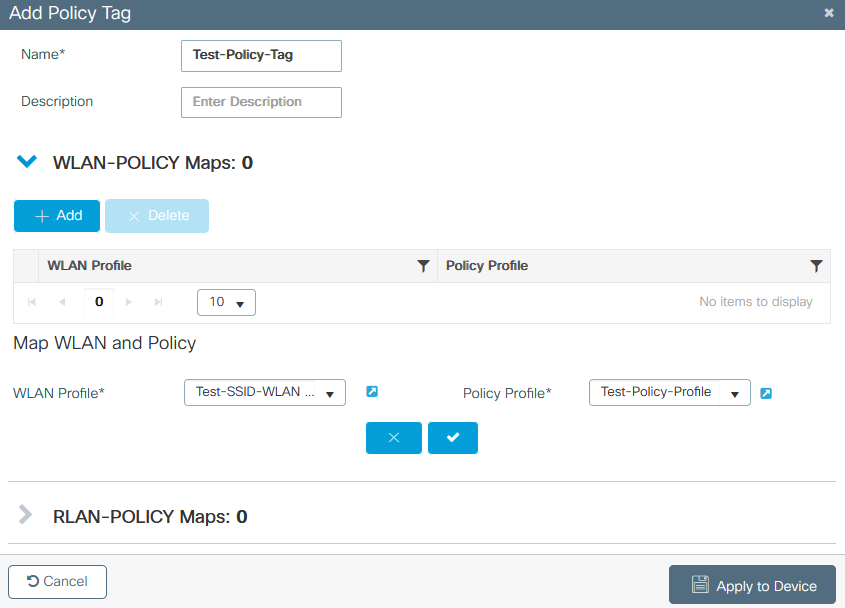
Site Tag
A Site Tag groups access points together (such as by site) to define their operational mode, AP Join Mode and manage their association to Wireless LAN Controllers.

RF Tag
An RF tag links specific RF profiles to an access point or group of access points. The RF tag determines which RF profiles (such as those for the 2.4 GHz, 5 GHz and 6 GHz bands) are applied to the radios of the APs assigned to that tag.
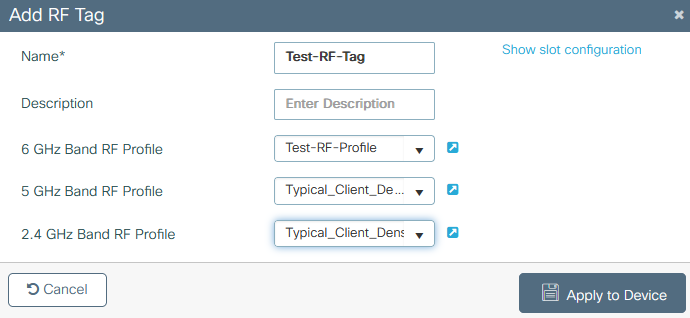
AP Tag
Finally, AP tags bring everything that we have configured together. This is where we allocate specific tags to specific APs (or groups of APs). Once defined here the configuration will be pushed to the access points selected and the wireless networks will become operational.


In summary, the following table provides a quick reference of each tag type and their purpose.
| Tag Type | Purpose |
|---|---|
| Policy Tag | WLAN/SSID and policy profile assignment |
| Site Tag | AP join, FlexConnect, and site-specific conf |
| RF Tag | Radio frequency and RF profile settings |